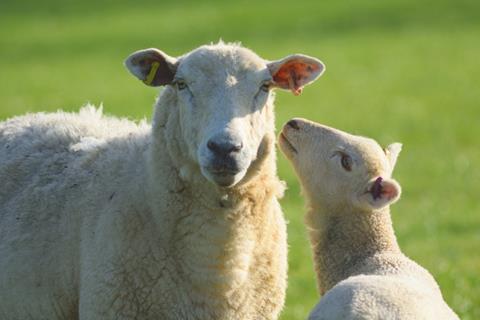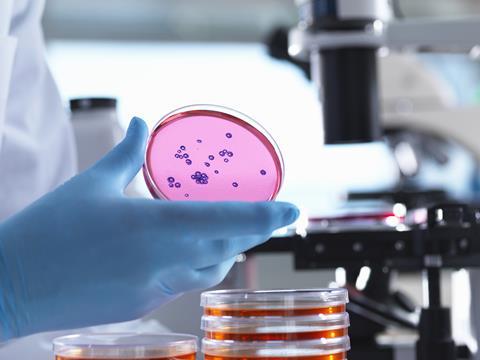Tamsin Dewé, Anju Kirby and Rachel Baird explain how the UK’s PATH-SAFE programme has filled evidence gaps relating to AMR in animals and furthered our understanding of AMR transmission pathways within agri-food systems.

The UK has well-established surveillance programs for antimicrobial resistance (AMR) in animals. However, large evidence gaps persist - for example, around AMR in ruminants (cattle and sheep), companion animals (most notably, dogs and cats) and horses. The Veterinary Medicines Directorate (VMD) is working to develop pilots or research to address these areas.
In this article, we share details of the Pathogen Surveillance in Agriculture, Food and Environment (PATH-SAFE) programme, which has filled some of these evidence gaps, and furthered the understanding of AMR prevalence and transmission pathways in the UK.
READ MORE: UK government issues advice on E coli amid rise in cases
READ MORE: Study suggests antibiotic-resistant ‘superbugs’ are being passed from cats and dogs to their owners
The Veterinary Medicines Directorate (VMD), which is an executive agency of Defra, leads AMR policy for animals in England, and coordinates UK-wide surveillance of AMR in two key livestock species - pigs and poultry – as they enter the food chain. This surveillance was originally developed to harmonise monitoring and reporting of AMR in animals and their meat across Europe, and has been running in the UK since 2014. It involves testing for resistance in zoonotic and commensal bacteria from healthy food-producing animals at slaughter.
The results from this programme are published yearly in the UK Veterinary Antimicrobial Resistance Sales and Surveillance (UK-VARSS) Report, and are used to monitor trends, identify emerging issues, and assess the impact of interventions to address AMR.
Filling research gaps
PATH-SAFE is a government-led programme to develop better national surveillance for foodborne pathogens and AMR in the environment and within agri-food systems. The programme, led by the Food Standards Agency (FSA) and funded by the Treasury’s Shared Outcomes Fund, has brought together experts in human, animal and environmental health, from across government, academia and industry, to co-design and deliver pilot projects.
These include: 1) creation of a genomic data platform; 2) generation and analysis of novel surveillance data; and 3) development of innovative surveillance methods, approaches and tools. Within these themes, the VMD and partners within and outside government have developed multiple surveillance pilots to push forward our understanding of AMR in UK animals.

National pilot surveys of AMR in beef cattle, dairy cattle, and sheep were conducted under PATH-SAFE. Samples were taken from healthy beef cattle and sheep at slaughter, similar to the routine monitoring conducted in pigs and poultry. To assess AMR in dairy cattle, samples were taken from bulk milk tanks on dairy farms, prior to pasteurisation.
Successful completion of these projects involved considerable collaboration across government and industry, facilitated by the PATH-SAFE team. These surveys have generated important initial baseline data for AMR in ruminants, which are not covered by existing UK-wide surveillance programmes. Results will be published in the forthcoming 2023 UK-VARSS Report.
Working across sectors
Alongside these surveys, PATH-SAFE has facilitated other AMR research projects across different sectors. These include measuring AMR in livestock feed and imported raw pet food ingredients, surveillance of AMR in the environment and wastewater, and investigating AMR in Campylobacter.
A full summary of all PATH-SAFE projects and partners, as well as links to publications, can be found on the PATH-SAFE website. The evidence generated from this portfolio of work has substantially progressed the understanding of AMR prevalence and transmission within the environment and agri-food systems in the UK. It demonstrates the significant benefits of well-funded, coordinated, cross-sectoral initiatives, which in the absence of continuous funding, can generate substantial long-term impacts to achieve outcomes that may otherwise be unattainable.

Outside of PATH-SAFE, which finishes in March 2025, the VMD continues to expand and develop AMR surveillance through pilot projects, research, and participation in other cross-governmental programmes. For example, the VMD is actively involved in another Shared Outcomes Fund programme: the National Biosurveillance Network (NBN). The aim of the NBN is to bring together data and improve ways of working to monitor new and emerging bio-threats, including AMR, more effectively across human, animal, plant, and environmental health.
The importance of surveillance
The UK’s AMR National Action Plan (2024-2029) underlines the vital importance of surveillance, across One Health sectors, to combat AMR. The VMD strives to improve AMR surveillance in animals and regularly assesses surveillance capabilities and needs. Pilots and research projects, such as PATH-SAFE, are an important step towards establishing surveillance in new areas, and demonstrate the power of this data. However, ongoing surveillance is necessary to maximise our ability to deliver effective, evidence-based interventions to minimise AMR.
Tamsin Dewé is Head of AMR Surveillance & Evidence at the VMD; Anju Kirby is AMR Surveillance Development Coordinator, also at VMD; Rachel Baird is PATH-SAFE Senior Project Manager at the Food Standards Agency (FSA).
Collaborators are the VMD, FSA, Food Standards Scotland (FSS), Animal and Plant Health Agency (APHA), Scotland’s Rural College (SRUC), National Milk Laboratories (NML), Arla Foods, Agricultural Industries Confederation (AIC) and food business operators.







No comments yet